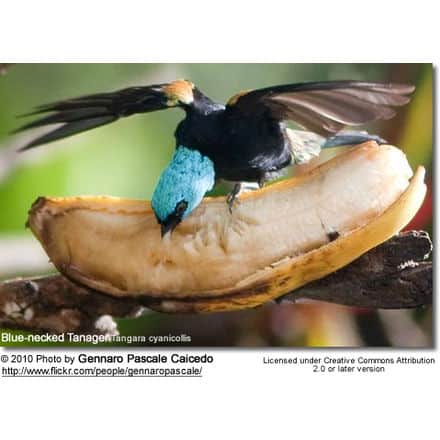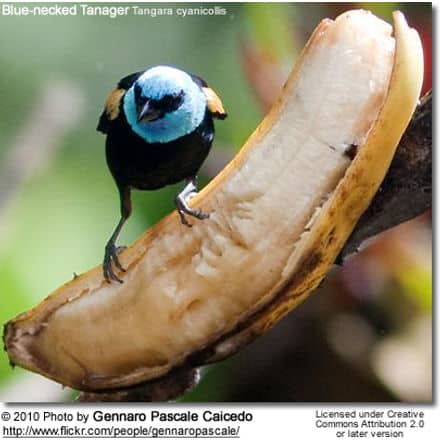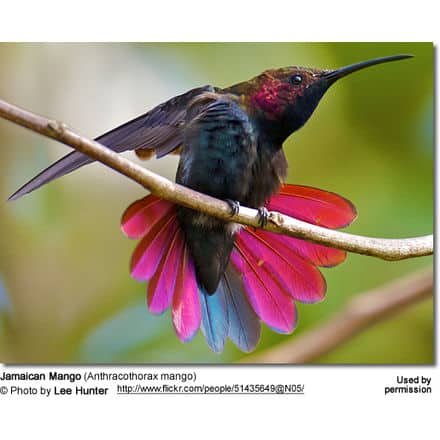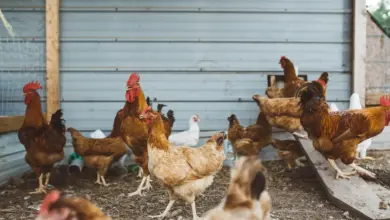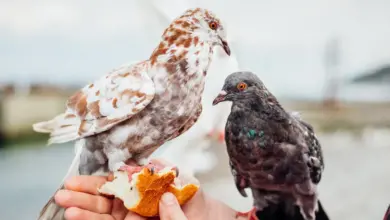Blue-necked Tanagers
The Blue-necked Tanager (Tangara cyanicollis) is a colorful South American Tanager.
Distribution / Range
The Blue-necked Tanagers are native to Bolivia, Brazil, Colombia, Ecuador, Peru and Venezuela.
Its natural habitats are subtropical or tropical moist lowland forests, moist montanes, as well as heavily degraded former forests. They are usually seen in semi-open areas and along forest edges.
They are found at elevation from 300 to 2400 meters (~1,000 – 8,000 feet) above sea level – however, they are most common above 1000 m (~3,000 feet).
Subspecies and Ranges
- Tangara cyanicollis cyanicollis – Nominate Race (Orbigny and Lafresnaye, 1837)
- Range: Eastern Peru (north to Huánuco) and eastern Bolivia
- Tangara cyanicollis granadensis (Berlepsch, 1884)
- Range: Andes of Colombia
- Range: East Andes of central Colombia to eastern Ecuador and northern Peru
- Range: Colombia (east of Eastern Andes) and western Venezuela
- Range: Western Ecuador
- Range: Western Amazonian Brazil (Amazon drainage of Mato Grosso)
- Range: Eastern Brazil (south Pará and south Goiás)

Description
The Blue-necked Tanager averages 12 cm (4.7 inches) in length and weighs approximately 17 g (0.6 oz).
Males can be identified by their brighter-colored wing bars. They have a blue hood and throat. The wing feathers, edges of the wings and rump (back of the lower back) are turquoise to a greenish straw color. The under plumage is black, violet or blue. The beaks, legs, and feet are black.
Juveniles are brownish grey – with a hint of adult coloration.
The coloration of adults varies slightly by region.
Tanager Information … Tanager Species … Tanager Species Photo Gallery
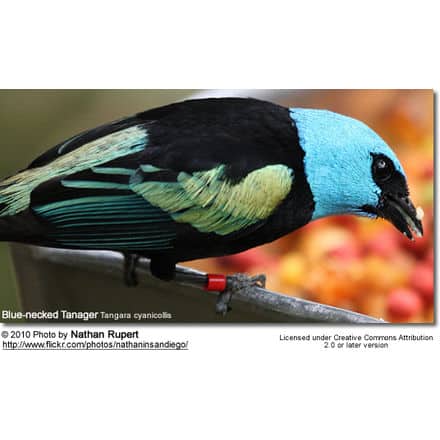
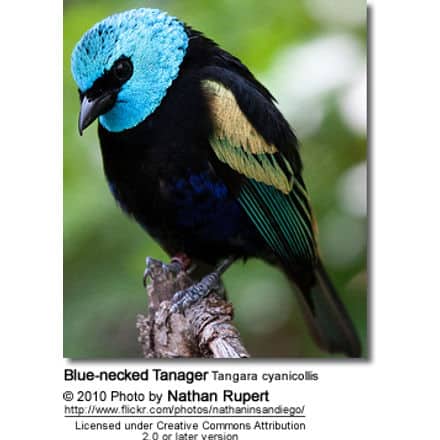
Nesting / Breeding
The female Blue-necked Tanager builds a cup nest of moss, usually well concealed.
The average clutch consists of 2 white eggs with brown spotting.
The incubation period is about 13–14 days. Both the male and female feed the chicks with insects and fruits. Other members of its flock may assist.
The young fledge when they are 15–16 days old.
Diet / Feeding
The Blue-necked Tanager’s diet mostly consists of fruits, berries, flower blossoms and, to a lesser extent, insects – which they will either pick from leaves or sometimes catch in flight.
During the breeding season, in particular, they increase the percentage of insects in their diet to meet their increased need for protein.
Aviculture
There are concerns about the large numbers of this beautiful bird species being taken from their natural habitat and exported in large numbers to meet demands for the pet market. Some groups have dedicated themselves to establish captive breeding programs in the United States specifically to be able to supply captive-bred instead of wild-caught birds.
Blue-necked Tanagers are non-aggressive and mix well with most small softbills and finches. They successfully breed in large cages or aviaries nesting in parakeet sized nest boxes
They prefer to nest high up and use cocco fiber for nesting material.
Their captive diet consists of live food (insects, worms, etc.), high-quality lory / softbill pellets, and plenty of soft fruits. Supplements, such as *Daily Essentials vitamins” and “Calciboost” may be necessary to prevent malnutrition.
